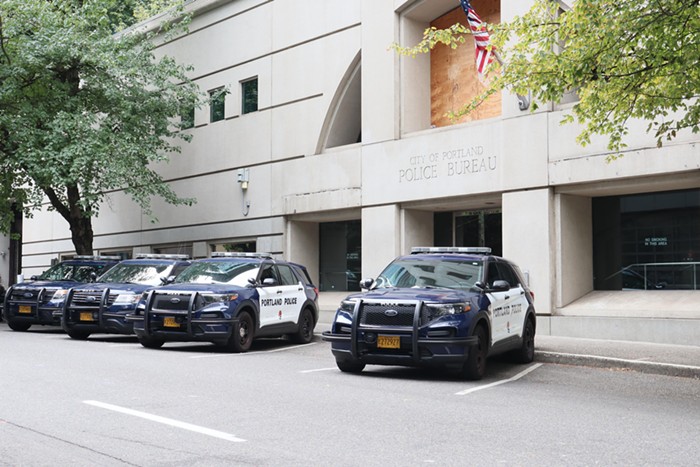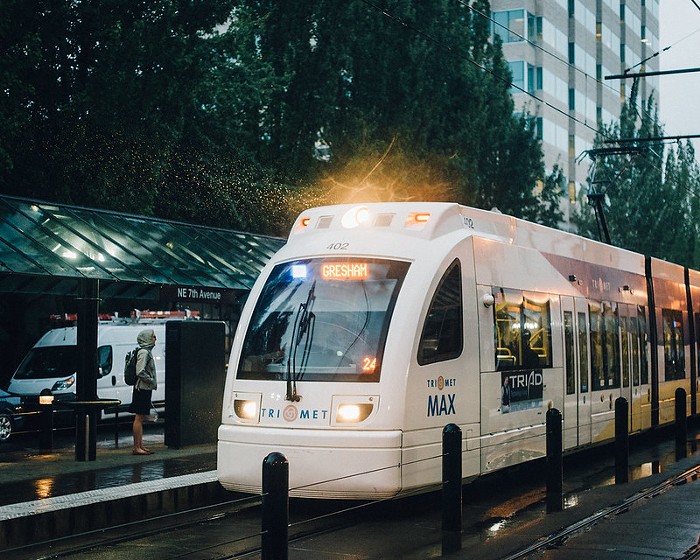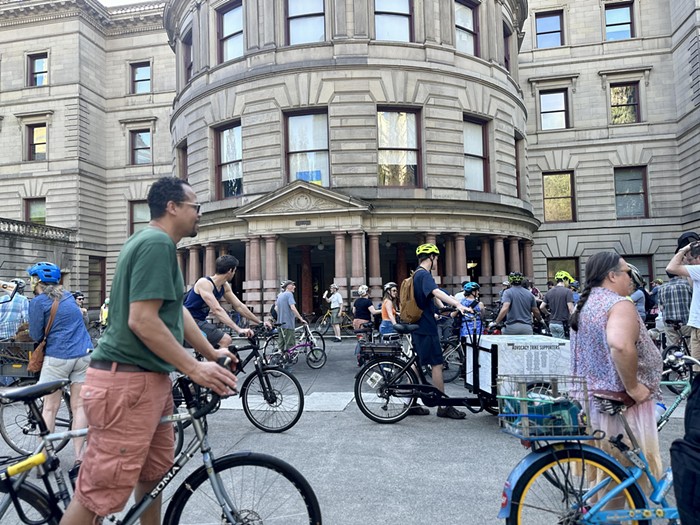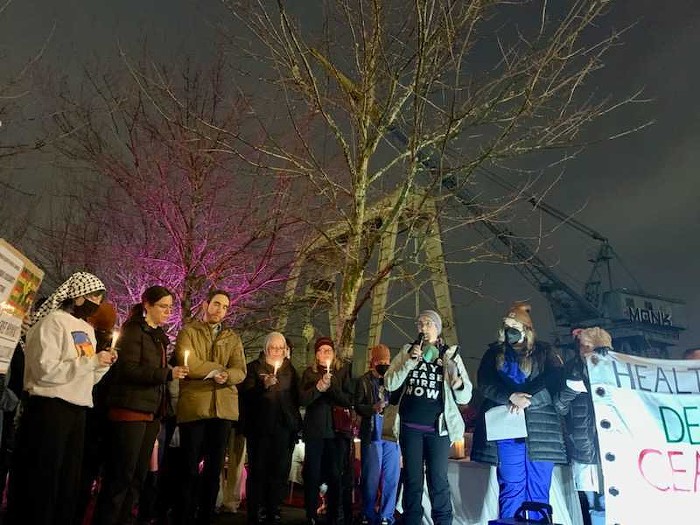IN A FRIGID ROOM off of North Mississippi, Mark Lakeman had come to give a pep talk.
“We’re done playing around, and we’re trying a little psychological warfare,” the Portland architect told 20 or so people gathered on December 2 to plot a new model for easing the city’s homelessness crisis. “We’re trying to break the resistance.”
Lakeman was addressing the Village Coalition, a collection of homeless residents, advocates, activists, faith leaders, architects, and more.

For most of this year, the group has been working to create small communities for the houseless. Now it’s on the verge of a major public showcase: the display of more than a dozen attractive, innovative, and portable “sleeping pods” in downtown Portland—many of them created by premier Portland architecture firms.
It’s a high-profile and increasingly mainstream argument for rethinking how Portland addresses its ongoing homelessness crisis. And as winter sets in and the city’s homeless population appears to be growing, it’s also the strongest push yet to convince a skeptical public that shelters aren’t enough, and affordable housing takes time.
The Village Coalition believes a vital component of easing the strain will be a series of “villages” made up of these pods on sites throughout the city—communities distinct from Portland’s many tent camps, with onsite services and active management. To that end, its members helped create a project known as the Partners On Design (POD) Initiative, a collection of architects, design students, and others, all bringing their best ideas for small structures the public might accept in their neighborhoods.
“If you show this can be done in a beautiful and dignified way, they can become part of the fabric of the community,” says Todd Ferry, an instructor with Portland State University’s Center for Public Interest Design, which recruited many organizations into the initiative.
Similar arguments have been made with increasing frequency in the last year and a half, but they’ve not resulted in much progress. Mayor Charlie Hales has so far allowed organized camps like Hazelnut Grove and Forgotten Realms to remain in North Portland—and even asked high school students to build tiny homes for similar sites—but his repeat efforts to find land for new projects have been fought by neighbors.
Still, it appears the village concept won’t die when Hales leaves office at the end of the month. Mayor-elect Ted Wheeler, who on the campaign trail said encampments like Hazelnut Grove weren’t “humane,” is now “highly supportive” of the push for these new communities, his office says.
“The reason Ted supports a tiny house pilot project is to see if we can create something that is more flexible than what is currently allowed, that has high design standards and conforms to community standards and public expectations,” Wheeler spokesperson Michael Cox says.
That’s precisely what the POD Initiative wants to hear.
Using $35,500 in city funding, and leveraging ideas from some of Portland’s top design minds, the effort has been working since early October toward an exhibition in the city’s North Park Blocks from December 9 to 11. In all, 14 innovative prototypes will be on display.

The small huts range in size from 48 to 96 square feet. Some resemble backyard sheds. Others incorporate innovative foldout porches and hideaway beds, or are able to connect with other structures to comprise a larger unit. But they all have to meet a list of standards that the city’s Bureau of Development Services has signed off on, ensuring they won’t need further city inspection before they’re set up. The units would be allowed on plots of land zoned to permit “group living,” officials say.
Firms that built the structures include Scott Edwards Architecture (designer of the Portland Mercado), Holst Architecture (Bud Clark Commons), SERA Architects (Burnside 26, anyone?), and more. PSU students also helped design two of the pods.
Here’s the question no one’s able to answer, though: What happens to the pods when the showcase ends on Sunday?
“We’re looking for a home for these homes,” Hales said Monday, December 5, in an event unveiling the designs. “It is not easy to site homeless people.”
That’s a lesson the mayor has learned too well. Earlier this year, for instance, his office convinced an organized camp of homeless women to move from city-owned property in Lents, promising another plot within weeks. That plot never turned up.

The mayor’s office now makes vague reference to potential land where the POD Initiative’s tiny homes—and others like them—might take root. It won’t offer specifics.
“We’re continuing to work in my office and I know the next administration will as well,” Hales said.
Whether the success of that work is bolstered by this week’s unprecedented showcase remains to be seen. And regardless if reactions are positive or negative, the Village Coalition is hoping its efforts will get people talking seriously about the city’s utter lack of housing resources.
As Lakeman told the Mercury: “This is a battering ram with a different kind of tip.”


















